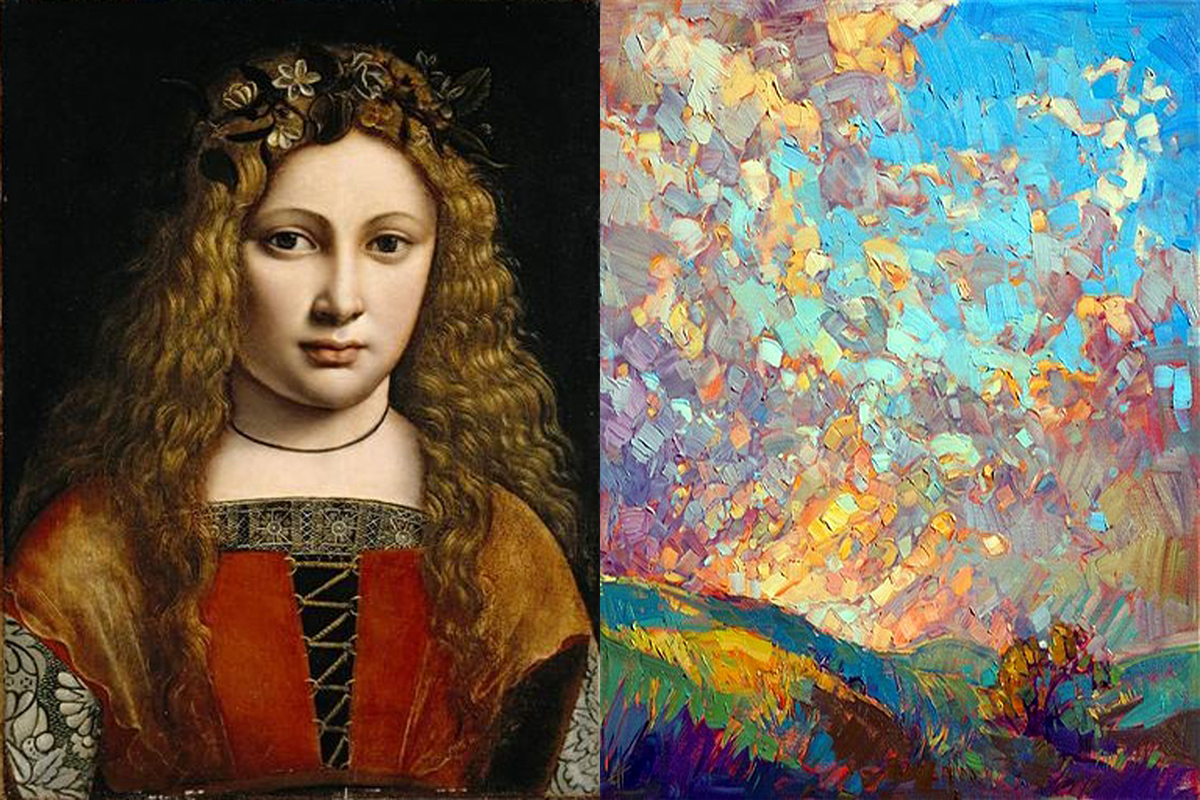In my studio, most people that visit are tourists visiting Asheville, and most visitors are just there to enjoy artwork. Most folks I meet are probably not looking at my artwork and wondering which World View spawned this style of art. (That makes me laugh just thinking about it.) I would go so far to say that 99.9% of people you might survey would not know what the term "World View" even means.
Every one of the visitors to my studio has a "world view" and are trying to understand my artwork (sometimes frantically), based on their world view.
However, every one of the visitors to my studio has a "world view" and are trying to understand my artwork (sometimes frantically), based on their world view. But that's like you using a meter stick to measure something I used a yard stick to create. You might look at both measuring devices and conclude that because they look similar and are used in exactly the same way, they're the same. But unless you factor in the differences between our two methods of measuring, you won't be able to make sense of my dimensions at all, correct? And that is why this "world view thing" is important to me. Art should be understood.
So...if I still have your attention by this third blog entry on "Understanding Art", then you are truly among the elite academics because this stuff would completely bore most people I meet. However, if you are still reading this blog and I still have your attention, that's awesome! You are well on your way to "getting" every piece of art you ever see. I'm totally serious.
Understanding the artistic creations of someone requires understanding what the creator was trying to say (not just your interpretation of it). And understanding that creator means digging into his or her world view (how they see the world -- how it works and why). Those basic assumptions shape everything about that person's life and especially the artistic work they produce (the art is, in essence, a huge clue into the soul of the artist).
Understanding the artistic creations of someone requires understanding what the creator was trying to say (not just your interpretation of it)
So we have already stated that, historically speaking, theism is the oldest World View. We said that according to theism, God is "here", present with us and wanting to interact with us. The next World View we considered sprung up in Europe in the 17th century and is called Deism. Deism asserts that God is "out there somewhere" but has nothing to do with the world he/she/it created. The next World View to evolve took this all one step further. Naturalism states that whether God exists or not is immaterial.
Naturalism is the view that the scientific method (hypothesize, predict, test, repeat) is the only effective way to investigate reality.
- Everything REAL can be explained scientifically. If it can’t, it’s not real.
- There is no moral right or wrong, good or bad. There is only fact and non-fact.
Therefore...
- What individual people do does not ultimately matter.
- There is no God to enjoy or glorify and there is no real significance granted to human beings other than what they imagine or make for themselves.
This world view is really interesting to me, because with virtually every other world view, I can find music, poetry and art that was generated from the standpoint of that world view. With Naturalism, I cannot. Nothing. I assume this is because music, poetry and art are transcendent, and naturalism disregards the transcendent as ultimately meaningless. Don't get me wrong...I don't think someone holding to this world view would hate art. But strictly speaking, artwork and the creation of beauty would be like wiring a paper leaf to tree-shaped sculpture made of metal rods welded together. Just because you hang the leaf on this "tree" might be very nice but it doesn't mean the tree is real. So create if you want, but that's not reality and is ultimately meaningless.
Strictly speaking, naturalism didn't last very long before it morphed into the next logical World View: Nihilism. And we will look at that one next, complete with poetry and art.















